'Tragic death' of medieval Paston family's daughter revealed
- Published
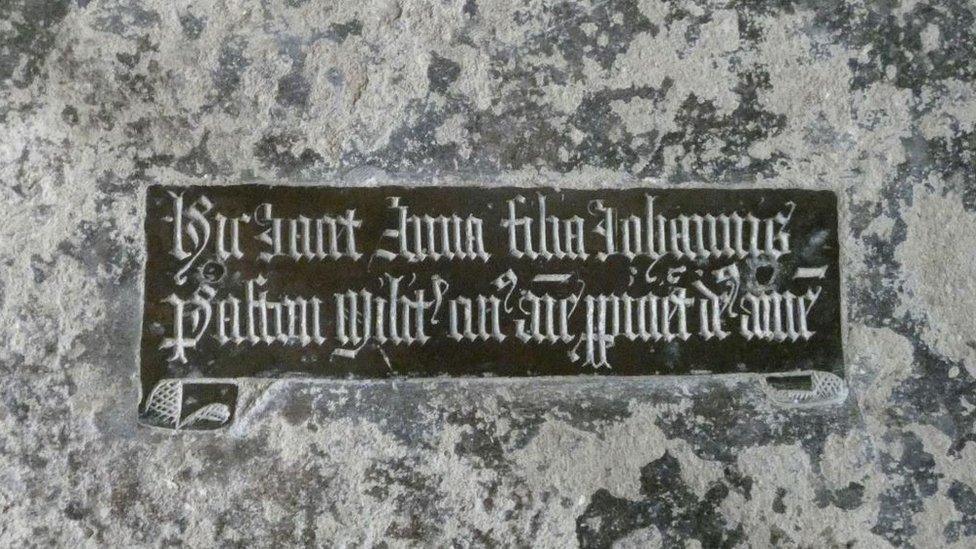
The heavily abbreviated Latin on the brass has been translated to: "Here lies Anna, daughter of John Paston Knight, on whose soul God have mercy, Amen."
The "short life and tragic death" of a young girl has been uncovered after the discovery of a medieval memorial brass.
Archaeologist Matt Champion discovered the memorial in Oxnead church near Aylsham in Norfolk on 28 May.
Anna Paston's brass was tucked away between two large tombs, obscured by the communion rail.
Mr Champion said the greatest surprise was that she was a member of the "most researched family" of medieval England, yet was unknown to historians.
Historian Helen Castor, an author who has written about the family, said: "This is an extraordinary find - not only a previously unknown Paston grave, but the grave of a previously unknown Paston."

Historian Helen Castor said the find is "an exciting reminder that we can always hope to find out more, even about histories we think we know"
The 250 by 80mm (9in by 3in) brass is the only surviving memorial to the medieval Pastons.

Who were the Paston family?
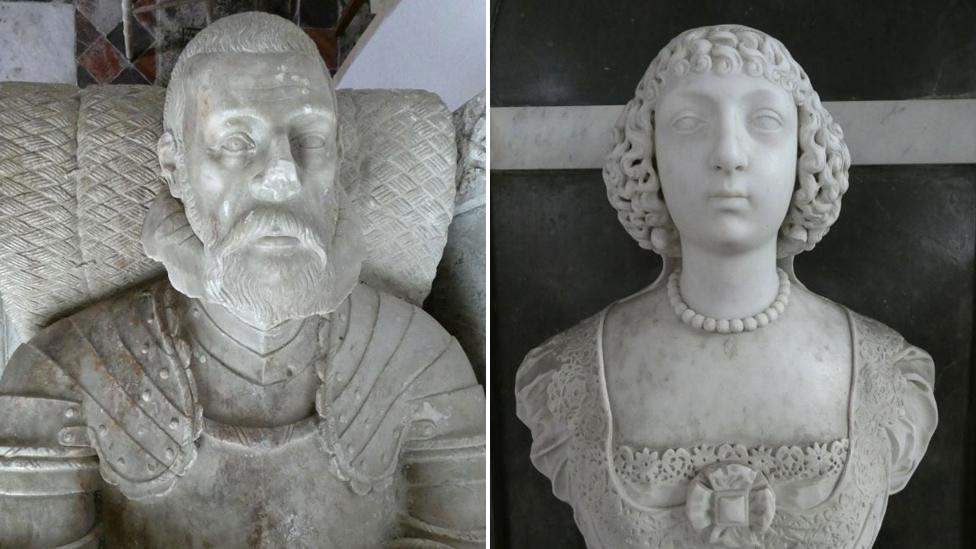
Matt Champion believes the small brass was overlooked because it has been obscured by "famous and splendid" monuments to later Pastons (above)
The family came from Paston in Norfolk and rose from peasantry to aristocracy against the backdrop of the Wars of the Roses
They left behind 1,000 letters, documents, shopping lists, leases and wills in one of the largest archives of 15th Century English private correspondence., external
The letters document bitter sieges, legal battles, favourite meals and family feuds
They were hidden away until rediscovered and published in the mid-18th Century
Source: British Library

It says: "Here lies Anna, daughter of John Paston Knight, on whose soul God have mercy, Amen."
Mr Champion said: "The find has brought to light the sad story of a young girl whose short life and tragic death had previously gone unnoticed."
It is believed Anna could have been a child or at most in her early teens when she died.
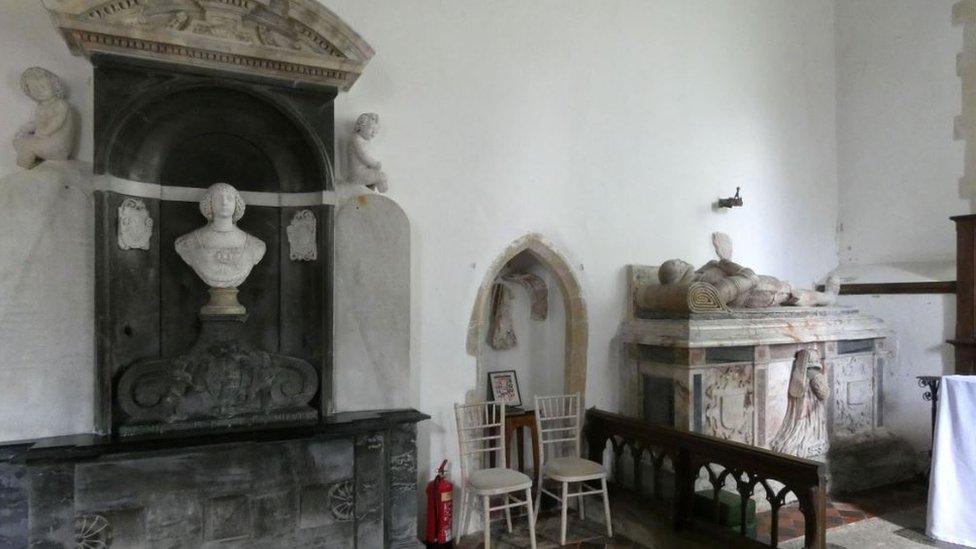
The small brass was "hiding in plain sight", obscured by the communion rails, Mr Champion said
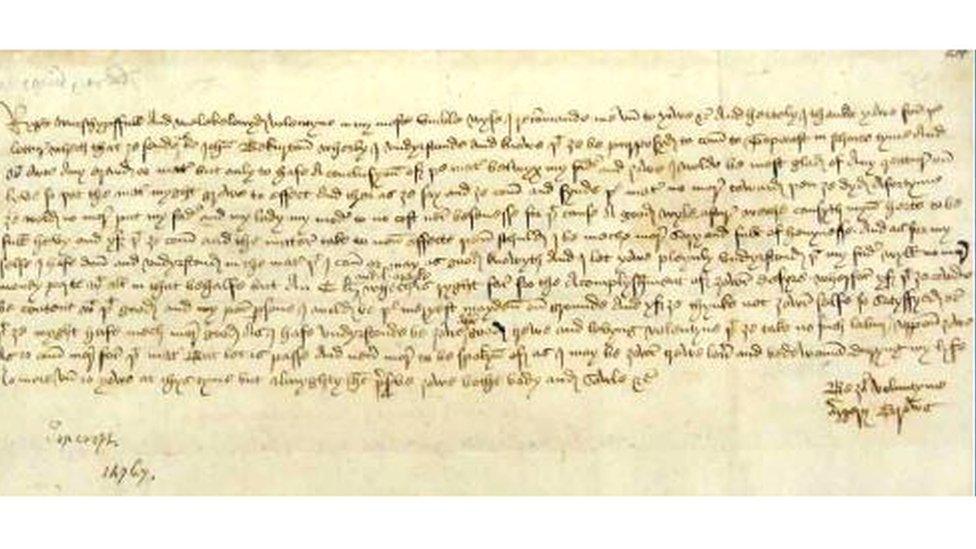
The letters ought to have been destroyed because some contained subversive views and plots but were instead hidden away
Dr Rob Knee, from the Paston Heritage Society, said the brass "is one of the type commonly used to memorialise an unmarried girl".
It has been linked to Norwich workshops in the 1490s to first decade of the 1500s, giving a clue as to Anna's likely age.
The discovery was made as part of the three-year Paston Footprints project, external.
- Published24 June 2018

- Published17 June 2018

- Published20 October 2013
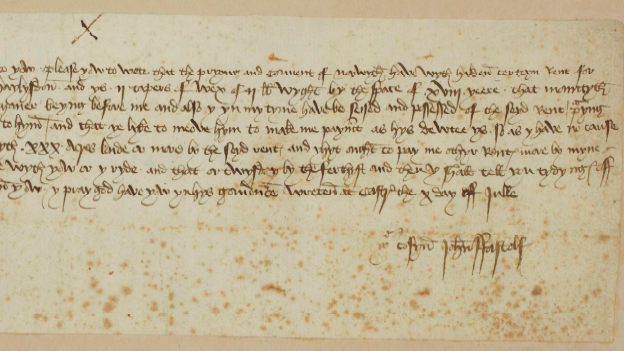
- Published14 February 2011